When it comes to creating a powerful visual impact, two popular techniques stand out: embossing and debossing. These distinct methods add a touch of sophistication and depth to promotional items, instantly elevating their appeal and brand recognition.
In this blog post, we will delve into the world of embossing and debossing, exploring their individual characteristics, applications, and the impact they can have on your promotional products. We will discuss the processes involved, the materials they work best with, and the potential design elements that can be enhanced through each technique.
By the end, you’ll have a comprehensive understanding of how embossing and debossing can elevate your promotional items and leave a lasting impression on your target audience.
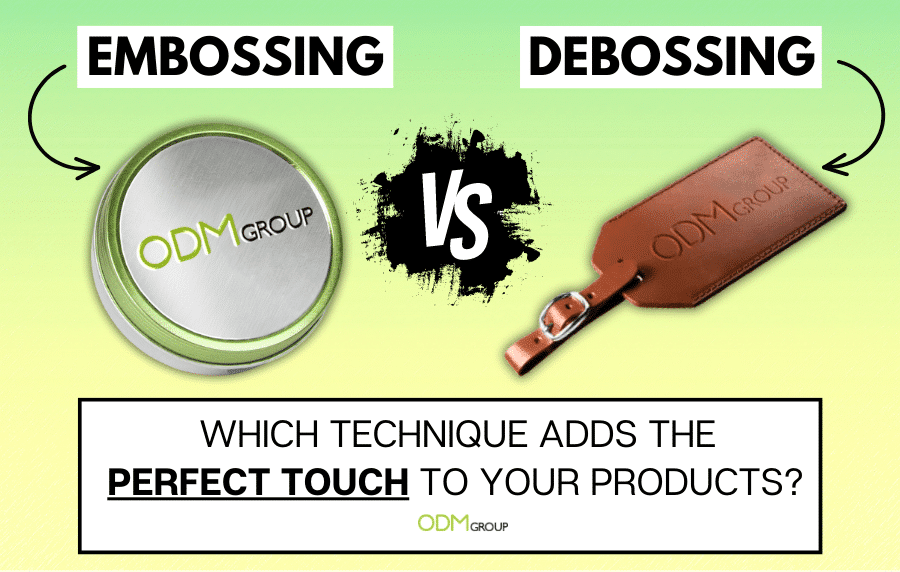
What is the Difference Between…
Here’s a table highlighting the key differences between embossing and debossing.
Understanding these differences will help you decide which technique best suits your promotional product’s design, desired impact, and overall branding objectives.
| Embossing | Debossing |
|---|---|
| Raised design or text is created on the surface of the material. | Indented design or text is created on the surface of the material. |
| Material is pushed from the back to create a raised effect on the front. | Material is pushed from the front to create a sunken effect on the back. |
| Provides a three-dimensional and raised appearance. | Provides a three-dimensional and recessed appearance. |
| Enhances the visibility of the design or text, making it more prominent and eye-catching. | Adds a subtle and elegant touch, giving the design or text a subdued and sophisticated look. |
| Commonly used to create a sense of luxury and prestige. | Often used for a more understated and refined aesthetic. |
How Does Embossing Work?
Embossing offers a versatile and effective way to add visual interest and sophistication to a wide range of promotional products.
Its three-dimensional nature and ability to create eye-catching textures make it a popular choice for businesses looking to make a lasting impression and elevate their brand.
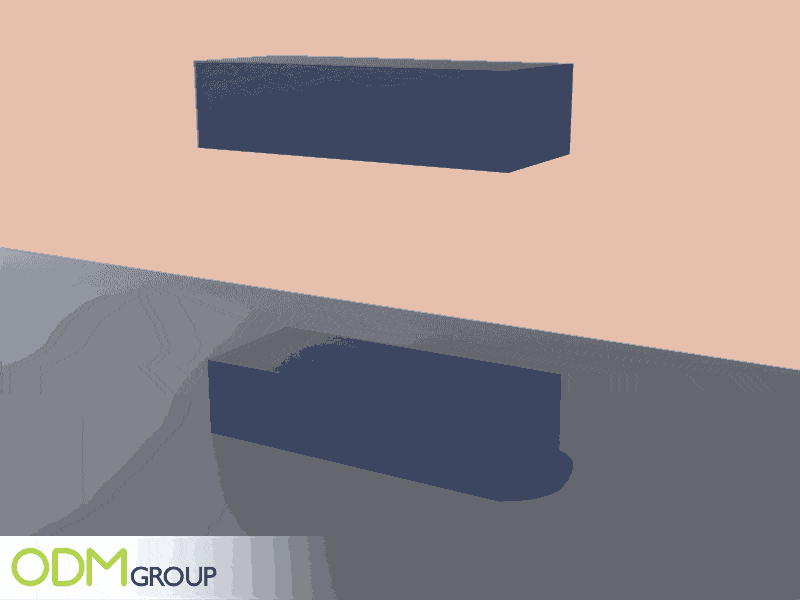
Here’s a step-by-step explanation of how embossing works:
1. Design Preparation
The process begins with the creation of a design or artwork that will be embossed. This design is typically in vector format and must be converted into a suitable format for embossing.
2. Die Creation
A die, also known as a metal plate, is then made based on the design. The die is usually made from metal, such as brass or magnesium, and contains a reverse impression of the desired design.
It is carefully crafted using specialized machinery or laser engraving techniques.
3. Material Preparation
The material to be embossed, such as paper, cardstock, leather, or fabric, is selected. It should have the necessary thickness and flexibility to withstand the embossing process.
4. Positioning
The material is carefully positioned between the die and a counter plate, providing support and stability during embossing.
5. Heat and Pressure Application
The die and counter plate are pressed with substantial force, applying heat and pressure to the material sandwiched between them.
The combination of heat and pressure softens the material, allowing it to mould and conform to the shape of the die.
6. Embossing Effect
As the pressure is applied, the design on the die is transferred onto the material, creating a raised effect.
The material takes on the shape and contours of the design, resulting in a visually striking and tactile embossed surface.
7. Cooling and Finishing
Once the embossing process is complete, the material can cool and set, retaining the raised design.
Further finishing techniques, such as trimming excess material or applying protective coatings, may be performed to enhance the overall appearance and durability of the embossed product.
Here’s an example of an Embossed logo:
Imagine holding a beautifully designed tin packaging container in your hands. As you run your fingers over its surface, you notice a captivating logo that stands out through a tactile sensation.
The logo is embossed, which means it is raised above the surrounding material, creating a visually striking and tactilely engaging effect.
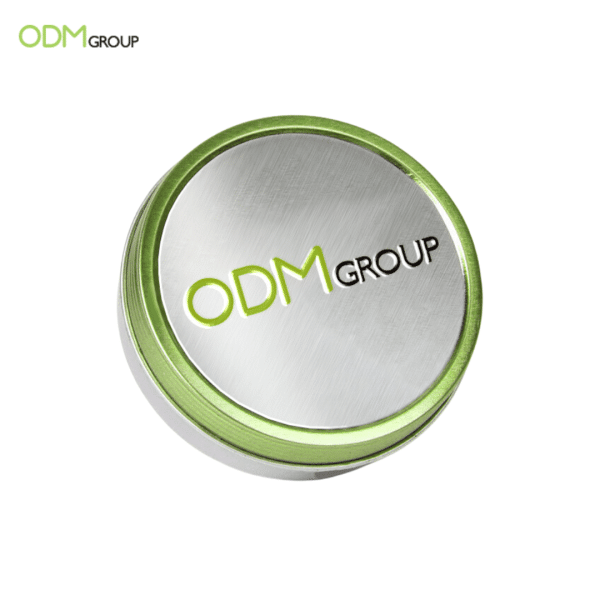
Embossing: Which Materials Work Best?
Embossing can be done on a variety of materials, but the effectiveness and results may vary depending on the material’s properties and characteristics. Here are some materials commonly used for embossing:
1. Paper/Cardstock
Embossing on paper is quite popular and widely used in stationery, invitations, business cards, and book covers. Thick cardstock or textured paper is often preferred for better embossing results.
2. Leather
Embossing on leather is commonly seen in products like wallets, belts, bags, and book covers. Leather provides a durable and textured surface that holds embossed designs well.
3. Vinyl
Vinyl materials, such as PVC (Polyvinyl chloride), are commonly used for embossing purposes. They are often used in applications like signage, promotional materials, and packaging.
4. Fabric/Textiles
Certain fabrics and textiles, especially those with a firm and smooth texture, can be embossed. This includes materials like denim, faux leather, and heavy cotton.
5. Metal
Embossing can also be done on thin metal sheets, such as aluminium or brass. Metal embossing is often used in metalwork, decorative art, and signage.
6. Plastics
Some plastics, like polystyrene or acrylic sheets, can be embossed. These materials are commonly used for creating embossed designs on signs, displays, and packaging.
7. Glass
Although less common, embossing can be done on glass surfaces. This is often seen in decorative glassware or specialized glass products.
It’s important to note that each material may require specific tools, techniques, and equipment for embossing.
Additionally, the results can vary depending on the thickness, texture, and flexibility of the material. It’s recommended to test embossing on a small sample of the material before proceeding with larger projects.
How Does Debossing Work?
Debossing is a technique used to create a three-dimensional or raised design on a surface, typically on paper, leather, or other materials. It is the opposite of embossing, which creates a raised design.
The process of debossing involves pressing a design or pattern into the material, creating a depressed or indented area.

Here’s a general overview of how debossing works:
1. Design Preparation
The first step is to create a design or artwork that will be debossed. This can be done using specialized graphic design software or by hand.
2. Die Creation
A die is a metal plate or block that contains a negative impression of the desired design. The die is typically made from magnesium, copper, or brass. The design is etched or engraved onto the surface of the die using specialized machinery or techniques.
3. Material Preparation
The material to be debossed is chosen, which is often a soft or pliable material such as paper, leather, fabric, or certain types of plastics. The material is cut and prepared in the desired shape and size.
4. Pressing Process
The debossing process requires a press machine, which consists of a stationary base and a moving plate. The die is attached to the base, while the material is positioned on the moving plate.
5. Heat and Pressure
To achieve the debossing effect, heat and pressure are applied. The material is placed between the die and the moving plate, aligning the design area with the die impression.
The press machine then applies pressure, causing the die to push into the material, creating the desired debossed effect. In some cases, heat may be applied to soften the material and enhance the debossing result.
6. Cooling and Finishing
After the pressing process, the material is allowed to cool and set, retaining the indented design.
Once cooled, the debossed material may undergo additional finishing processes such as trimming excess material, adding colour, or applying protective coatings.
Here’s an example of a Debossed logo:
Here’s an example of a debossed logo on a promotional wallet. The debossed pattern, meticulously imprinted onto the surface of the wallet, lends it a unique texture and visual depth.
This subtle yet striking design element adds an element of intrigue and sets this wallet apart from the ordinary.
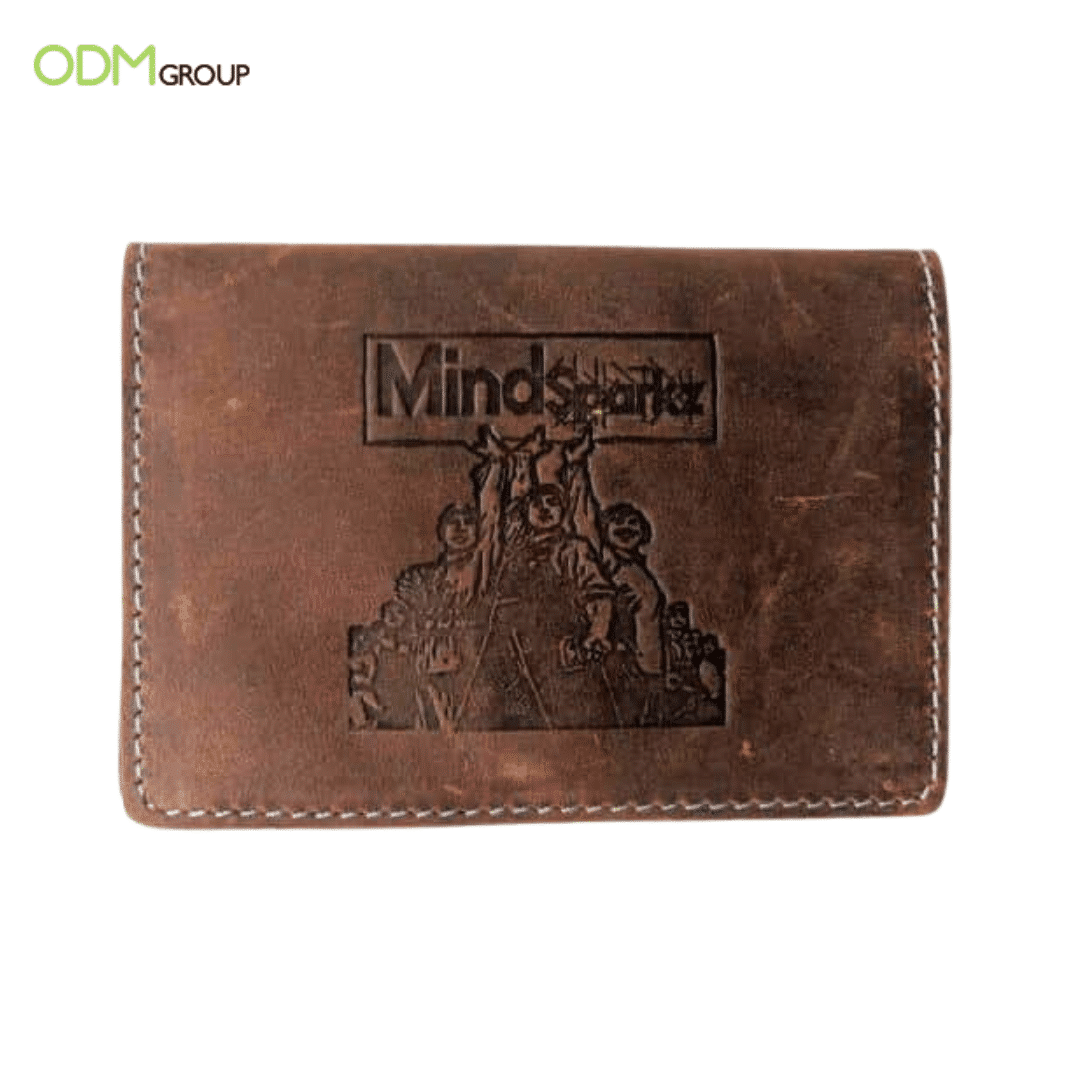
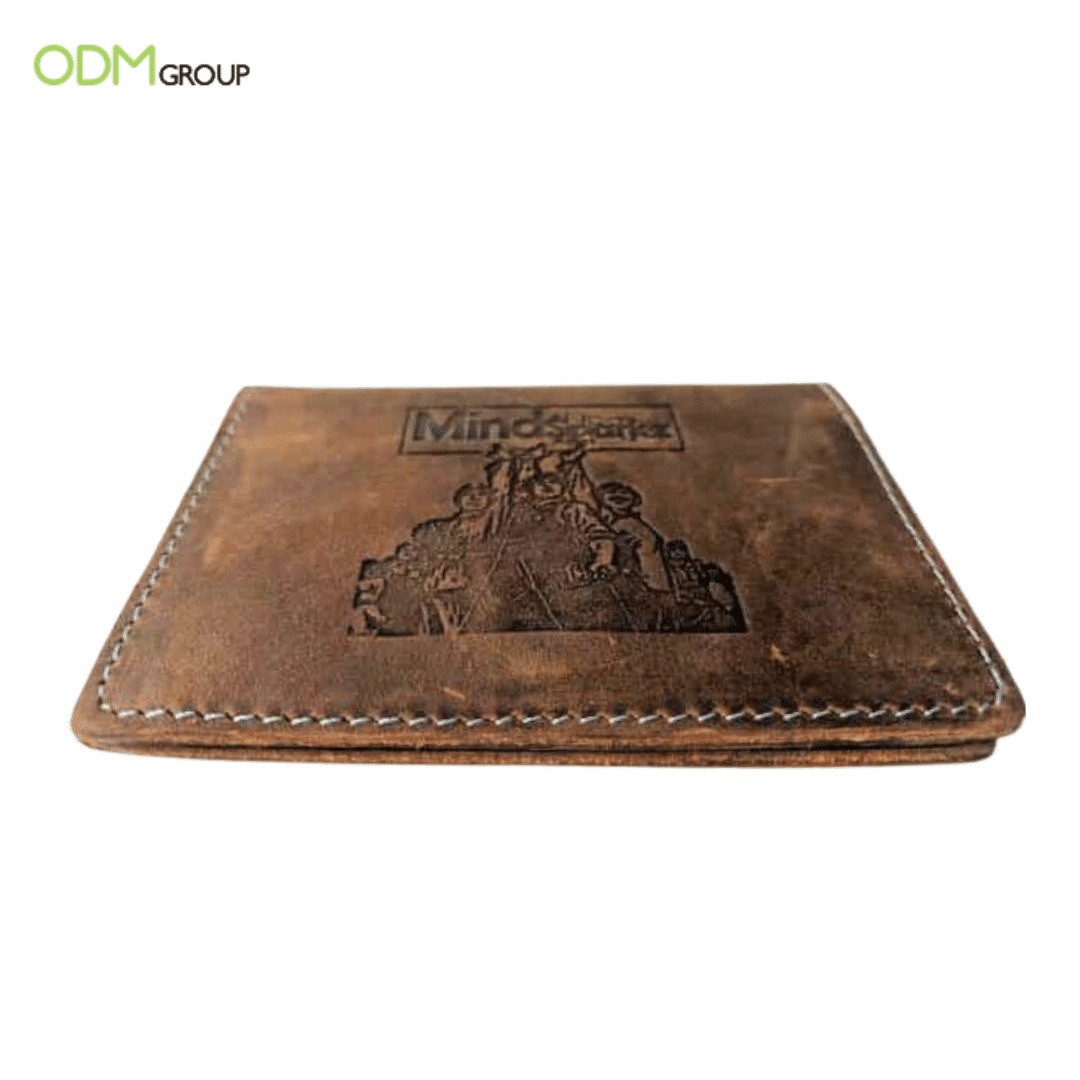
Debossing: Which Materials Work Best?
Here is a list of materials that typically work well with debossing:
1. Leather
Debossing is commonly used on leather products such as wallets, bags, and journals. Leather is a durable material that can hold up well to the debossing process.
2. Paper/Cardstock
Debossing on paper or cardstock is a popular technique for creating elegant and sophisticated stationery, business cards, and invitations. Thick and high-quality papers are preferable for achieving a clean and precise debossed effect.
3. Fabric/Textiles
Certain fabrics and textiles, particularly those with a firm and stable structure, can be debossed. Examples include canvas, denim, and some synthetic materials. It’s important to test the specific fabric beforehand to ensure it can withstand the process without fraying or tearing.
4. Faux Leather/Pleather
Synthetic materials designed to mimic the look and feel of genuine leather, such as faux leather or pleather, can also be successfully debossed. They offer a more affordable and animal-friendly alternative to real leather.
5. Cork
Cork is a natural and sustainable material that can be debossed to create unique textures and patterns. It’s commonly used in various products like coasters, placemats, and wallets.
6. Thermoplastic Materials
Certain thermoplastic materials, such as polyurethane (PU) or polyvinyl chloride (PVC), can be debossed. These materials are often used in the production of promotional items like keychains, phone cases, and ID badges.
7. Wood
While debossing on wood is less common, it can be achieved with certain types of wood that have a dense and sturdy structure. It can add a distinctive and rustic touch to wooden products.
It’s important to note that the suitability of a material for debossing may depend on its specific properties, thickness, and the equipment used for the process. It’s always recommended to test the material before conducting a large-scale debossing project.
Explore a range of more innovative decoration methods on this page to create an irresistible appeal for your brand.
Want to Emboss or Deboss Your Promotional Product?
Well, we can help you with that! We here at ODM design, source and manufacture custom promotional products. Our talented team of in-house product designers, Mindsparkz, can design the perfect promotional item to set your brand apart from all the other brands at any trade show!
We also offer product brainstorming sessions to come up with a range of custom promotional products perfect for your brand. Do not hesitate to contact us today to find out how we can help your brand with your marketing needs.
Embossing Vs Debossing FAQs
What is embossing?
Embossing is a technique used in printing and design to create a raised, three-dimensional effect on a surface. It involves pressing or stamping a design onto a material, causing it to protrude from the surface.
What is debossing?
Debossing is the opposite of embossing. It involves pressing or stamping a design into a material, creating a sunken or indented effect on the surface.
What materials can be embossed or debossed?
Embossing and debossing can be done on various materials, including paper, cardstock, leather, vinyl, fabric, and certain plastics. The suitability of the material depends on its thickness and flexibility.
How are embossing and debossing achieved?
Both embossing and debossing are achieved by using a die or a mold. The die is created with the desired design or pattern, and pressure is applied to transfer the design onto the material.
What design elements work best with embossing or debossing?
Bold, simple designs with distinct lines and shapes tend to work well with both embossing and debossing. Logos, monograms, borders, and patterns can be effectively enhanced using these techniques.
Can embossing or debossing be combined with other printing techniques?
Yes, embossing and debossing can be combined with other printing techniques such as foil stamping, letterpress, and digital printing. This allows for more creative and visually striking results.
Is embossing or debossing more expensive than regular printing?
Embossing and debossing are specialized techniques that require additional equipment and expertise, so they are typically more expensive than regular printing. However, the added visual and tactile impact can make it worth the investment for certain projects.
How durable are embossed or debossed designs?
Embossed or debossed designs tend to be quite durable, especially when done on sturdy materials. However, excessive bending or rough handling may cause the raised or indented areas to flatten or distort over time.




